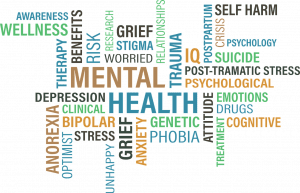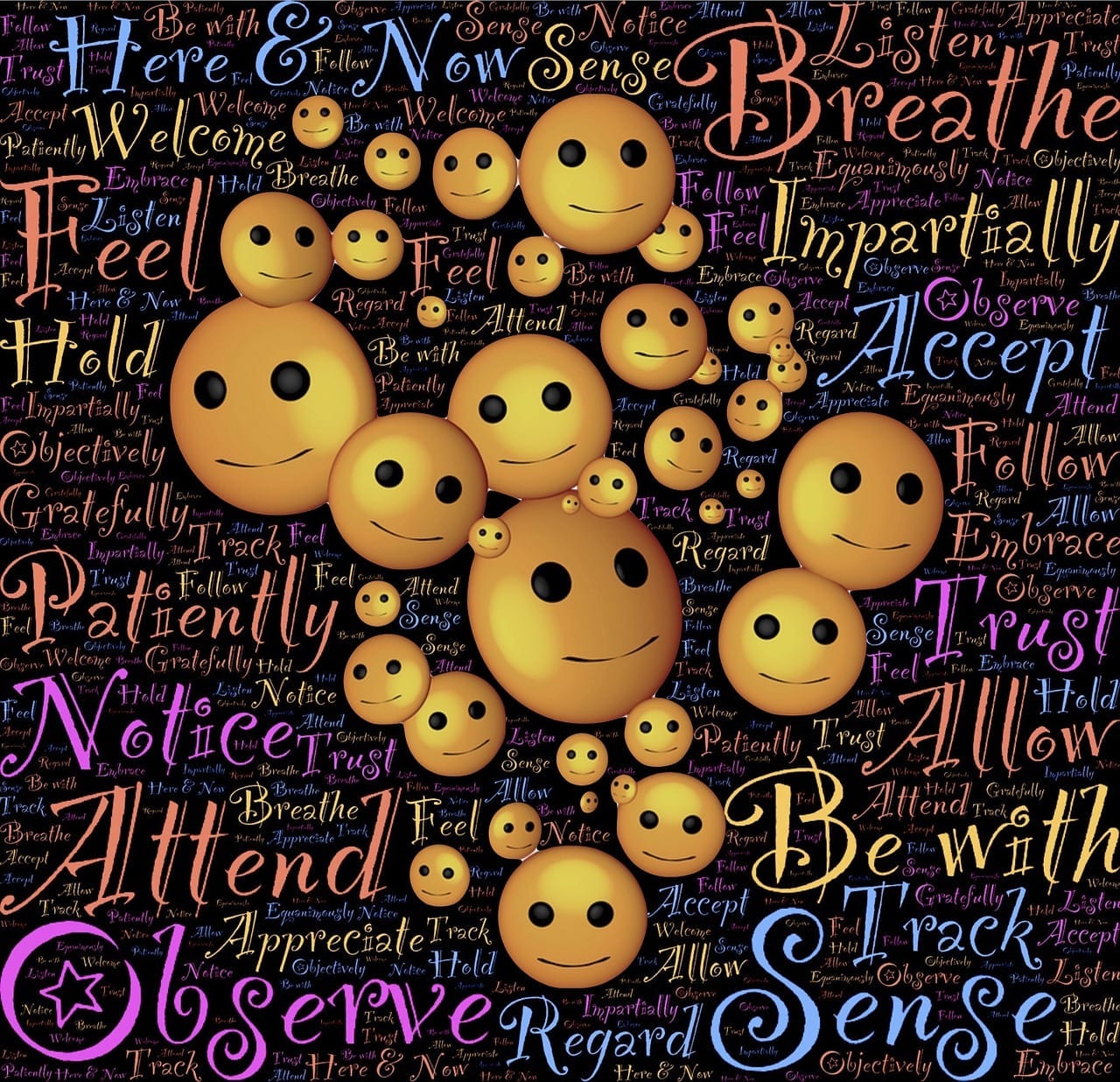Tags: Obsessive compulsive disorder. Obsessive compulsive personality disorder. Mental health.
OBSESSIVE COMPULSIVE DISORDER & OBSESSIVE-COMPULSIVE PERSONALITY DISORDER
“Why do you throw bread crumbs outside your front door every day?”
“To keep the tigers away!”
“But there are no tigers!”
“Yes effective, isn’t it?”
One of my favourite pastimes is people watching. Not judging people, but rather observing. My fascination is in the behaviour of the individuals or groups not how they dress or their size. I had an occasion when I was the one being observed. When we lived in Brisbane my garden was my oasis and I kept it immaculate. Leaves would blow all over our front lawn and I would be out there daily cleaning them up.
On this day I was out sweeping the dreaded leaves into the lobby duster pan, in my own dream world. When I heard a child ask his mother; very loudly; “Why is that lady sweeping the grass?” My job of sweeping up the leaves was, in fact, a way of me relaxing and letting go of all the stress of my day. Clean lawn, happy mind. There are numerous reasons why we humans do so many strange things.
Most of them are harmless but there are some that can make life harder. Obsessive-Compulsive Disorder (OCD) and Obsessive-Compulsive Personality Disorder (OCPD) are said to affect two to three percent of the population. With OCD there are more than 500,000 Australians who experience it, for OCPD it is one percent of the population. Within the psychiatric population, it is three to ten percent is said to have OCD or OCPD. The Definitions OCD, Obsessive-compulsive disorder can be defined as a condition: “…in which people have unwanted and repeated thoughts, feelings, ideas, sensations (obsessions), or behaviours that make them feel driven to do something (compulsions). Often the person carries out the behaviours to get rid of the obsessive thoughts, but this only provides temporary relief. Not performing the obsessive rituals can cause great anxiety.

OCD can be anywhere from mild to severe, but when severe, and left untreated, it can destroy an individual’s capacity to function in all aspects of their life (Psychology Today). OCPD, Obsessive-compulsive personality disorder is a personality disorder, also called Anankastic Personality. “It’s a pervasive pattern of preoccupation with orderliness, perfectionism, and mental and interpersonal control, at the expense of flexibility, openness, and efficiency, beginning by early adulthood and present in a variety of contexts” (psychcentral.com). Individuals who suffer from this disorder have difficulty in incorporating new and changing information into their lives.
Their ability to work with others is equally affected since they see the world as black and white. As demonstrated by these characteristics:
- Rigid adherence to rules and regulations
- perfectionism
- an overwhelming need for order
- unwillingness to yield or give responsibilities to others
- a sense of righteousness about the way things “should be done”
- mental and interpersonal control at the expense of flexibility, openness, and efficiency (Psych Central). The names may be similar and the obsessive nature of the two disorders does have overlap.
Below are key differences between them.
Presence of obsessions and compulsions;
- Salient with OCD,
- Not present in OCPD. People with OCD and OCPD might both carry out repetitive behaviours, but the reason for performing them is different in each case.
- An individual with OCD may repeatedly write out lists or try to organise items around the home to prevent a disaster taking place (thus carrying out the behaviours is a compulsion stemming from obsessive thoughts about disaster).
- A person with OCPD, meanwhile, would be doing the same thing to increase his or her efficiency. Stability of symptoms.
- OCD is an illness whose symptoms may change in severity over time.
- OCPD reflects an excessively rigid personality style which tends to be present all a person’s lifetime. Onset.
- Up to one third to one-half of adults with OCD report a childhood onset of the disorder.
- OCPD generally begins in early adulthood. Views about the relative normality of symptoms.
- People with OCD endure great distress, as they realise how their time-consuming, compelled behaviours are not normal.
- OCPD individuals believe that nothing is wrong with their behaviour, that it is perfectly normal, and that if someone else is distressed by it, they are the problem. Causes for difficulties in social relationships.
- Individuals suffering from OCD might seek professional help to rid themselves of the unwanted rituals of repetitiveness.
- Those dealing with OCPD might visit a counselor because of relational issues. Specifically, they might have conflict with friends and family around their need to have others conform to their way of doing things. Perfectionism, control, and workaholism.
- OCPD have a higher need for order and control; they are more prone to perfectionism, and this tends to engender problems with workaholism.
- OCD has none of these traits. The common specific manifestations, behaviours, and associated features of the disorders.

OCD: The categories, the obsessions, and the compulsions
The categories of OCD
- Washers usually have cleaning or hand-washing compulsions, fearing contamination by things that are non-threatening to others (e.g., the handle on a grocery trolley)
- Checkers repeatedly check things – such as whether the door is locked, the jug is turned off, or the alarm has been set – that they associate with harm or danger
- Doubters and sinners fear that something terrible will happen or they will be punished if everything isn›t perfect or done just right
- Counters and arrangers are obsessed with order and symmetry, holding superstitions about certain numbers, colours, or arrangements
- Hoarders compulsively hoard things that they don›t need or use, fearing that something bad will happen if they throw anything away
The obsessions
- Fear of being contaminated by germs or dirt or contaminating others Fear of causing harm to self or others
- Intrusive sexually explicit or violent thoughts and images
- Excessive focus on religious or moral ideas and is often narrow-minded with a literal interpretation of things
- Fear of losing or not having things one might need Order and symmetry: the idea that one needs to line things up “just right”
- Superstitions: excessive attention to things that are considered lucky or unlucky. These could be items such as “lucky” charms, the number 13,
- breaking a mirror or keeping the lights on all night. It is the repetitive, intrusive nature of such thoughts, which become obsessive. The compulsions
- Excessive double- or multiple-checking of things, such as locks, appliances, and switches
- Repeated checking that loved ones are safe
- Performing senseless behaviours such as counting, tapping or repeating certain words to reduce anxiety
- Spending a lot of time washing or cleaning (some OCD clients are known to spend four hours daily with such rituals)
- Ordering or arranging things “just so”
- Praying excessively or engaging in rituals triggered by religious fear
- Accumulating useless items such as old magazines or newspapers or empty food containers.
Associated features of OCPD
The features of OCPD, may not distress the OCPD client, but certainly impact those in the individuals involved in their life.
Indecisiveness: OCPD sufferers will procrastinate on the decision hoping to gain more certainty as to which is the “correct” decision, the driving force being to avoid being wrong. Emotional rigidity: Dealing with the volatility of emotions is an ongoing challenge for those with OCPD.
The effort in trying to contain emotion tends to generate the following consequences for those with this disorder:
- They display flat affect, where jokes and sarcasm are delivered with the same monotonic expression as normal utterances.
- They become overwhelmed with the effort of trying to be constrained and blow up. Rendering anger their basic, most easily triggered emotion.
- They defend against displays of vulnerability, resulting in occasional “silly” ways which expose them to rejection.
Depressed mood: It is hugely distressing for individuals with OCPD to come to terms with their human flaws, and the resultant self-hatred and disappointment yields certain depression. Fault-finding on themselves is thus a continuing source for conflict.
Owning truth: Rather than allow feelings of satisfaction for a job well done, the OCPD individual is relegated to a world of fear, senseless time-wasting, and loss of clarity.
The tendency to check and recheck “completed” tasks to avoid even little mistakes: is the ideal of “perfect” followed by OCPD sufferers.
Strict moral and religious standards: Predictably, moral righteousness and a habit (compulsion?) to dogmatically preach morality.

The resultant fundamentalist thinking brings with it a propensity to find fault with different views. Why? Quite possibly the reason is different for each individual. There are possibly some innate personality traits that may well be a predispose for OCD. There are suggestions of the compulsive checking allowing people to escape everyday life.
We all like to feel as though we have control over our lives, and we know that OCD often commences with “If I do this, then that won’t happen.” Unfortunately, Treatment OCPD Like most personality disorders, treatment is often focused on short-term symptom relief and the support of existing coping mechanisms while teaching new ones.
Obsessive-compulsive personality disorder is especially resistant to such changes, because of the basic makeup of this disorder. Treatment options which do not fit within the client’s cognitive schema will likely be quickly rejected rather than attempted. One important aspect is to build emotional intelligence. Try and have the individual examine and properly identify their feeling states, rather than just intellectualizing or distancing themselves from their emotions.
This can be accomplished through a variety of techniques, such as feeling identification as part of the therapy session. Journal work where they write their feelings down as they notice them. Proper identification and realization of feelings can bring about much change in and of itself.
Treatment OCD Psychiatrist Jeffrey Schwartz an American psychiatrist and researcher in the field of neuroplasticity and its application to obsessive-compulsive disorder (OCD) advises clients dealing with OCD to take the following steps:
1. Relabel. Challenge yourself to recognise that intrusive, obsessive thoughts and urges are being engendered by OCD and relabel them. For example, you can get in a habit of saying, “I don’t think or feel that my hands are dirty. I’m just having an obsession that my hands are dirty.” Or, “I don’t feel that I have the need to wash my hands. I’m having a compulsive urge to perform the compulsion of washing my hands.”
2. Reattribute. Intensive, intrusive thoughts or urges are caused by OCD via a biochemical imbalance in the brain. You can say to yourself, “It’s not me—it’s
3. my OCD, ”to remind you that OCD thoughts and urges are not meaningful but are false messages from the brain.
4. Refocus. Focus your attention on something else for a few minutes when experiencing OCD thoughts and urges. Do another behaviour instead. Say to yourself, “I’m experiencing a symptom of OCD. I need to do another behaviour.” You could walk, exercise, listen to music, make a phone call, or work on a creative project. The point is to do something for at least 15 minutes which distracts you from the obsessive thought. At the end of the period, reassess the urge; in many cases, it will be less intense. The more you can delay the urges, the more likely they are to change.
5. Revalue. OCD thoughts are not significant in themselves and should not be taken at face value. Here you can tell yourself, “That’s just my stupid obsession. It has no meaning. There’s no need to pay attention to it.” You can’t make the thoughts go away, but neither do you need to pay attention to them. You can learn to go on to the next behaviour. I always encourage people to follow three general tips for successful self-management of any mental health issue.
They are;
- challenging the obsessive thoughts and compulsive behaviours,
- maintaining good self-care, and
- reach out for support.
“Watch your thoughts, they become words.
Watch your words, they become actions.
Watch your actions, they become habits.
Watch your habits, they become your character.
Watch your character, it becomes your destiny.”
– Lao Tzu
Wishing you all good mental health – Veronica.
Other Articles
https://thebribieislander.com.au/the-sensory-movie-day-group-aspergers-autism/
